Sqlite Pivot Columns To Rows
Before delving into the topic of pivot columns to rows in SQLite, it is essential to have a basic understanding of SQLite and how to create a database in it. SQLite is a popular, lightweight, and embedded relational database management system. It is widely used in various applications due to its simplicity and ease of integration. To create a SQLite database, follow these steps:
1. Download and install SQLite: Go to the official SQLite website (https://www.sqlite.org/download.html) and download the appropriate installation package for your operating system. Follow the installation instructions to set up SQLite on your computer.
2. Open the SQLite command-line shell: Once installed, open the command-line interface or terminal on your operating system and enter the command “sqlite3”. This will open the SQLite command-line shell.
3. Create a database: In the SQLite command-line shell, use the following SQLite command to create a new database:
“`sql
.open database_name.db
“`
Replace “database_name” with the desired name for your database. This command will create a new SQLite database file with the given name.
Understanding the Structure of a Pivot Table
A pivot table is a powerful tool for data analysis and transformation. It allows you to reorganize and summarize data by converting columns into rows. In a pivot table, you define the row and column headers and use aggregation functions to fill in the cells. It provides a concise and structured view of complex data, making it easier to analyze and make informed decisions. In SQLite, there is no built-in support for pivot tables, but there are several techniques and functions that can be used to achieve similar results.
Transposing Columns into Rows using a Pivot Table
To pivot columns into rows in SQLite, you need to use a combination of SQL queries and functions. One common approach is to use the SQL CASE statement, which allows you to perform conditional logic and transform columns into rows. Here is an example:
“`sql
SELECT
id,
CASE column_name
WHEN ‘column1’ THEN column1
WHEN ‘column2’ THEN column2
WHEN ‘column3’ THEN column3
— Add more WHEN clauses for additional columns
END AS value
FROM
your_table;
“`
In this example, we use the CASE statement to create a new column called “value” that contains the values from different columns based on the specified conditions. The “id” column remains unchanged, serving as the identifier for each row. This query will pivot the columns “column1”, “column2”, and “column3” into rows, creating a new row for each value.
Using the SQL CASE statement for pivot transformation can be cumbersome and requires manual specification of column names. An alternative approach is to use the SQLite GROUP_CONCAT function in conjunction with a subquery. The GROUP_CONCAT function concatenates values from multiple rows into a single string. Here is an example:
“`sql
SELECT
id,
value
FROM
(
SELECT
id,
GROUP_CONCAT(column1, column2, column3, …) AS value
FROM
your_table
GROUP BY
id
);
“`
In this example, we use the GROUP_CONCAT function to concatenate the values from multiple columns into a single string called “value”. The subquery groups the results by the “id” column, ensuring that each row represents a unique identifier. This approach allows you to pivot multiple columns into rows without explicitly specifying each column name.
Applying the SQLite GROUP_CONCAT Function
The SQLite GROUP_CONCAT function is a powerful tool for transforming columns into rows. It concatenates values from multiple rows into a single string, separated by a specified delimiter. The GROUP_CONCAT function takes one or more arguments, representing the columns or expressions to be concatenated, and returns a string.
Here is the general syntax of the GROUP_CONCAT function:
“`sql
GROUP_CONCAT(expression1, expression2, …, separator)
“`
The “expression” arguments can be columns, literals, or expressions. The “separator” argument is optional and specifies the delimiter to be used between each concatenated value. If the “separator” is not specified, SQLite uses a comma (“,”) as the default delimiter.
Implementing the UNPIVOT Operator in SQLite
In traditional SQL databases, the UNPIVOT operator is used to convert columns into rows, opposite to the PIVOT operation. However, SQLite does not natively support the UNPIVOT operator. Nevertheless, you can achieve similar results using SQL queries and functions.
One common approach is to use a UNION ALL operator to combine multiple SELECT statements, each selecting a different column and generating rows. Here is an example:
“`sql
SELECT
id,
‘column1’ AS column_name,
column1 AS value
FROM
your_table
UNION ALL
SELECT
id,
‘column2’ AS column_name,
column2 AS value
FROM
your_table
UNION ALL
SELECT
id,
‘column3’ AS column_name,
column3 AS value
FROM
your_table
— Add more UNION ALL clauses for additional columns
ORDER BY
id, column_name;
“`
In this example, each SELECT statement selects a different column and generates rows with the corresponding column name and value. The UNION ALL operator combines the results from each SELECT statement into a single result set. Using the ORDER BY clause, you can ensure that the results are ordered by the “id” column and the “column_name” column.
Using Common Table Expressions (CTEs) for Pivot Transformation
Common Table Expressions (CTEs) provide a way to define temporary result sets that can be used within a query. They are particularly useful for pivot transformations in SQLite as they allow you to structure complex SQL queries more efficiently.
To use CTEs for pivot transformation, you can define multiple CTEs, each selecting a different column and generating rows. Here is an example:
“`sql
WITH cte1 AS (
SELECT
id,
‘column1’ AS column_name,
column1 AS value
FROM
your_table
),
cte2 AS (
SELECT
id,
‘column2’ AS column_name,
column2 AS value
FROM
your_table
),
cte3 AS (
SELECT
id,
‘column3’ AS column_name,
column3 AS value
FROM
your_table
)
— Add more CTEs for additional columns
SELECT
*
FROM
(
SELECT * FROM cte1
UNION ALL
SELECT * FROM cte2
UNION ALL
SELECT * FROM cte3
— Add more UNION ALL clauses for additional CTEs
)
ORDER BY
id, column_name;
“`
In this example, each CTE defines a temporary result set selecting a different column and generating rows with the corresponding column name and value. The UNION ALL operator combines the results from each CTE into a single result set. Using the ORDER BY clause, you can ensure that the results are ordered by the “id” column and the “column_name” column.
Dynamically Pivoting Columns in SQLite
In some cases, you may need to pivot columns dynamically, where the column names are not known in advance. SQLite does not have a built-in syntax for dynamic pivot transformations, but you can achieve this using a combination of SQL queries and programming languages like Python.
One approach is to use a script or a stored procedure that dynamically generates the SQL query for pivot transformation based on the available columns. Here is an example using Python and SQLite:
“`python
import sqlite3
# Connect to the SQLite database
conn = sqlite3.connect(‘your_database.db’)
cursor = conn.cursor()
# Get the available column names from the table
cursor.execute(“PRAGMA table_info(your_table)”)
columns = [column[1] for column in cursor.fetchall()]
# Generate the SQL query for pivot transformation
query = f”””
SELECT
id,
column_name,
value
FROM
(
SELECT
id,
‘ || ‘.join([f'”{column}” AS “{column}”‘ for column in columns]) + ”’ AS column_name,
‘ || ‘.join([f'”{column}”‘ for column in columns]) + ”’ AS value
FROM
your_table
)
UNPIVOT (
value
FOR column_name IN (‘ || ‘, ‘.join([f'”{column}”‘ for column in columns]) + ”’)
)
ORDER BY
id, column_name;
“””
# Execute the SQL query and fetch the results
cursor.execute(query)
results = cursor.fetchall()
# Print the results
for row in results:
print(row)
# Close the database connection
conn.close()
“`
In this example, the Python script connects to the SQLite database, retrieves the available column names from the table, and dynamically generates the SQL query for pivot transformation using string formatting. The query uses the UNPIVOT operator to convert columns into rows. Finally, the script executes the SQL query, fetches the results, and prints them.
Advanced Techniques for Handling Pivot Transformation in SQLite
In addition to the techniques discussed above, there are various advanced techniques and extensions available for handling pivot transformation in SQLite. These techniques and extensions provide additional flexibility and functionality for working with pivot tables.
SQLite Pivot Extension:
The SQLite Pivot Extension is a third-party extension that adds support for pivot operations in SQLite. It provides a set of SQL functions and syntax enhancements specifically designed for pivot transformations. With this extension, you can perform pivot operations more easily and efficiently. To use the SQLite Pivot Extension, you need to download and install it from the appropriate source or repository and follow the provided documentation.
SQLite Pivot Crosstab:
The SQLite Pivot Crosstab is another third-party extension that adds support for crosstab operations in SQLite. It allows you to generate crosstab reports, which are summary tables that show the relationship between two or more fields as rows and columns. This extension enhances the capabilities of pivot transformations in SQLite by providing additional features and customization options.
SQLite Filter:
The SQLite Filter clause allows you to selectively include or exclude rows from the result set based on specified conditions. It can be used in conjunction with pivot transformations to filter the rows that are pivoted into columns. The Filter clause provides flexible filtering capabilities, enabling you to define complex conditions using logical operators and comparison operators.
PostgreSQL Pivot Rows to Columns:
PostgreSQL, another popular relational database management system, natively supports the PIVOT operation, allowing you to easily pivot rows into columns. If you are working with SQLite but require advanced pivot functionality, you may consider migrating to PostgreSQL, which provides native support for pivot transformations. PostgreSQL offers a wide range of features and capabilities, making it a powerful choice for handling complex data transformations.
FAQs
Q: Can I pivot columns into rows in SQLite without using the PIVOT operator?
A: Yes, you can achieve similar results without using the PIVOT operator in SQLite. By using SQL queries, functions like CASE and GROUP_CONCAT, and techniques such as UNION ALL, CTEs, and dynamically generating SQL queries, you can pivot columns into rows and effectively transform your data.
Q: Can I perform dynamic pivot transformations in SQLite?
A: While SQLite does not have native support for dynamic pivot transformations, you can still achieve this by dynamically generating SQL queries using programming languages like Python. By retrieving the available column names from the table and generating the SQL query based on these columns, you can dynamically pivot the columns into rows.
Q: Are there any third-party extensions or libraries that provide enhanced pivot functionality in SQLite?
A: Yes, there are third-party extensions available for SQLite that provide enhanced pivot functionality. The SQLite Pivot Extension and SQLite Pivot Crosstab are two popular extensions that add support for pivot and crosstab operations, respectively. These extensions provide additional features and customization options for working with pivot tables in SQLite.
Q: Can I use PostgreSQL instead of SQLite for better pivot functionality?
A: Yes, PostgreSQL provides native support for the PIVOT operation, making it a more straightforward choice for advanced pivot functionality. If you require advanced pivot transformations and SQLite’s capabilities fall short, you may consider migrating to PostgreSQL, which offers a wide range of features and capabilities for handling complex data transformations.
Sql Query – Convert Data From Rows To Columns | Pivot
How To Pivot Data In Sqlite?
Data manipulation is an integral part of working with databases. Often, it becomes necessary to reorganize and summarize data in different ways to gain useful insights from it. One such operation is pivoting data, which involves transforming rows into columns. SQLite, a popular and lightweight database management system, also provides the capability to pivot data. In this article, we will explore how to pivot data in SQLite in detail.
Before diving into the practical aspects, let’s understand the concept of pivoting data. Consider a table with multiple rows and columns containing various attributes. In its original form, this data may not be structured optimally for analysis. Pivoting the data allows us to rotate the table, making the existing rows become the columns, and the columns become the rows. This transformation helps in easier identification of patterns, comparisons, and aggregation.
SQLite does not have an inherent PIVOT function like some other relational database systems, but we can achieve the desired results using SQL queries and a combination of other SQLite functions. Here are a few methods to pivot data in SQLite:
1. Using CASE Statements:
One way to pivot data in SQLite is by utilizing the powerful CASE statement. By utilizing multiple CASE statements, we can create columns based on the values in another column. For instance, let’s say we have a table named “Sales” with columns “Month”, “Region”, and “Revenue”. We can create a new table with “Region” as columns and “Revenue” as values, using multiple CASE statements for each region.
2. Aggregation with GROUP BY:
SQLite supports various aggregation functions like SUM, AVG, COUNT, etc. By combining these with the GROUP BY statement, we can pivot data. For example, if we have a table named “Orders” with columns “Product”, “Region”, and “Quantity,” we can aggregate the quantity over each region using a GROUP BY clause to obtain a pivoted result.
3. Using Recursive CTE:
SQLite allows recursive common table expressions (CTEs) to handle complex queries. By using recursive CTEs, we can pivot data in a more flexible manner. With recursive CTEs, we can generate rows dynamically based on the existing data and then pivot them. This method can be useful when the number of columns is not predetermined.
4. Dynamic Pivoting:
If the number of columns needed for pivoting is not known beforehand, we can use dynamic SQL to create the required SQL statements. By querying the metadata of the dataset and constructing the SQL dynamically, we can effectively pivot data based on the available columns.
FAQs:
Q1. Are there any limitations to pivoting data in SQLite?
While SQLite provides various methods to pivot data, it’s essential to understand its limitations. Since SQLite is a lightweight database, it may not handle large datasets efficiently during pivoting operations. Additionally, the lack of a built-in PIVOT function may require more complex SQL queries or workarounds to achieve the desired result.
Q2. Which pivot method should I choose in SQLite?
The choice of pivot method depends on the complexity and requirements of the data transformation. If the number of columns is known in advance, using CASE statements or aggregation with GROUP BY might be suitable. Recursive CTEs are preferable when the number of columns is variable or when a more dynamic approach is required.
Q3. How efficient is pivoting data in SQLite?
The efficiency of pivoting data depends on the size of the dataset, the complexity of the query, and the available hardware resources. SQLite’s performance is optimized for single-user and lightweight scenarios; therefore, pivoting large datasets could lead to performance degradation. It’s recommended to test and optimize queries to improve performance.
Q4. Can I reverse the pivot operation in SQLite?
Yes, it’s possible to unpivot or revert the pivot operation in SQLite. By using similar techniques, like CASE statements or recursive CTEs, we can transform pivoted data back to its original form, turning columns back into rows.
In conclusion, SQLite may not provide a direct PIVOT function, but there are multiple ways to achieve the same results. By exploiting features like CASE statements, aggregation with GROUP BY, recursive CTEs, and dynamic SQL, we can effectively pivot data in SQLite. Understanding the techniques and their limitations is crucial for efficient data manipulation. Experimenting with different methods can help determine the most suitable approach for each specific use case.
How To Pivot Rows To Columns In Mysql?
One of the powerful features of MySQL is the ability to transform rows into columns, a process commonly referred to as “pivoting”. This operation is especially useful when we need to analyze data or present it in a format that is more intuitive and easier to comprehend.
In this article, we will explore different methods to pivot rows to columns in MySQL, providing step-by-step explanations and examples to help you gain a better understanding of the concept.
1. Using Aggregate Functions and CASE Statements:
A common approach to pivoting rows to columns involves using aggregate functions, such as SUM, COUNT, or MAX, in conjunction with CASE statements. This method allows us to define conditions for each column and aggregate the corresponding values accordingly.
Consider the following example:
Suppose we have a table called “sales” with the following structure:
“`
+———+——-+——+
| Product | Month | Sales|
+———+——-+——+
| A | Jan | 100 |
| A | Feb | 150 |
| A | Mar | 80 |
| B | Jan | 50 |
| B | Feb | 70 |
| B | Mar | 90 |
+———+——-+——+
“`
To pivot this table to have a column for each month, we can execute the following query:
“`sql
SELECT
Product,
SUM(CASE WHEN Month = ‘Jan’ THEN Sales END) AS Jan,
SUM(CASE WHEN Month = ‘Feb’ THEN Sales END) AS Feb,
SUM(CASE WHEN Month = ‘Mar’ THEN Sales END) AS Mar
FROM sales
GROUP BY Product;
“`
The resulting table would be:
“`
+———+—–+—–+—–+
| Product | Jan | Feb | Mar |
+———+—–+—–+—–+
| A | 100 | 150 | 80 |
| B | 50 | 70 | 90 |
+———+—–+—–+—–+
“`
2. Using the GROUP_CONCAT Function:
Another approach to pivot rows to columns is by utilizing the GROUP_CONCAT function. This function concatenates multiple rows into a single string based on a specified separator.
Consider the following example:
Suppose we have a table called “employees” with the following structure:
“`
+—-+——-+——-+
| ID | Name | Title |
+—-+——-+——-+
| 1 | John | CEO |
| 2 | Alice | CTO |
| 3 | Jake | CFO |
+—-+——-+——-+
“`
To pivot this table, we can execute the following query:
“`sql
SELECT
GROUP_CONCAT(DISTINCT CASE WHEN ID = 1 THEN Name END) AS CEO,
GROUP_CONCAT(DISTINCT CASE WHEN ID = 2 THEN Name END) AS CTO,
GROUP_CONCAT(DISTINCT CASE WHEN ID = 3 THEN Name END) AS CFO
FROM employees;
“`
The resulting table would be:
“`
+——+——-+——+
| CEO | CTO | CFO |
+——+——-+——+
| John | Alice | Jake |
+——+——-+——+
“`
3. Pivot Rows with Dynamic Columns:
In scenarios where the number of columns or their values are not determined in advance, using dynamic SQL can be a viable solution. This technique allows us to generate the necessary SQL query dynamically based on the available data.
Consider the following example:
Suppose we have a table called “orders” with the following structure:
“`
+—-+———+——-+——+
| ID | Product | Month | Sales|
+—-+———+——-+——+
| 1 | A | Jan | 100 |
| 2 | A | Feb | 150 |
| 3 | A | Mar | 80 |
| 4 | B | Jan | 50 |
| 5 | B | Feb | 70 |
| 6 | B | Mar | 90 |
+—-+———+——-+——+
“`
To dynamically pivot this table, we can execute the following query:
“`sql
SET @sql = NULL;
SELECT
GROUP_CONCAT(DISTINCT
CONCAT(‘SUM(CASE WHEN Month = ”’, Month, ”’ THEN Sales END) AS ‘, Month)
) INTO @sql
FROM orders;
SET @sql = CONCAT(‘SELECT Product, ‘, @sql, ‘ FROM orders GROUP BY Product’);
PREPARE stmt FROM @sql;
EXECUTE stmt;
DEALLOCATE PREPARE stmt;
“`
The resulting table would be the same as the one obtained in the first example.
FAQs:
Q: Can we pivot rows to columns when the number of columns is not known in advance?
A: Yes, using dynamic SQL allows us to pivot rows to columns even when the number of columns is not predetermined.
Q: Are these pivot methods only applicable in MySQL?
A: No, these methods can be applied in other databases as well. However, the syntax may vary slightly depending on the database management system being used.
Q: Can we pivot rows based on multiple columns simultaneously?
A: Yes, it is possible to pivot rows based on multiple columns using the techniques mentioned above. The key is to appropriately handle the conditions in the aggregate functions or CASE statements.
Q: Are there any performance considerations when pivoting rows to columns?
A: Yes, pivoting large amounts of data can significantly impact performance. It is important to consider the size of the dataset and the available system resources when using these pivot methods.
In conclusion, pivoting rows to columns in MySQL is a powerful technique that allows for more flexible and intuitive data analysis and presentation. By using aggregate functions, CASE statements, and dynamic SQL, we can effectively reshape data to suit our specific needs. Remember to keep performance considerations in mind when dealing with large datasets.
Keywords searched by users: sqlite pivot columns to rows sqlite pivot extension, sqlite pivot crosstab, sqlite unpivot, convert columns to rows in sql without pivot, python sqlite pivot, sql pivot wider, sqlite filter, postgresql pivot rows to columns
Categories: Top 83 Sqlite Pivot Columns To Rows
See more here: nhanvietluanvan.com
Sqlite Pivot Extension
In the world of data manipulation, SQLite has emerged as one of the most widely-used database management systems. Its lightweight nature, ease of use, and flexible licensing have made it a popular choice among developers and organizations. While SQLite offers a wide range of powerful features, one of the standout functionalities is its pivot extension, providing users with the ability to pivot data for advanced processing and analysis. In this article, we will take a deep dive into the SQLite pivot extension, exploring its capabilities, use cases, and advantages, to help you unleash the power of data manipulation.
Understanding the SQLite Pivot Extension:
The pivot extension in SQLite enables users to transform and reshape their data from a vertical format to a horizontal one, facilitating a better understanding and analysis of information. It simplifies the complex process of converting rows into columns, making it easier to work with aggregated data. The pivot extension operates on the principle of grouping, aggregating, and transposing data, ensuring that users have the necessary tools to manipulate and extract insights from their databases.
Use Cases for the SQLite Pivot Extension:
1. Financial Data Analysis: The pivot extension can be immensely valuable in financial data analysis, especially when dealing with data captured in a time series format. By pivoting data, users can present information such as revenue, expenses, and profits over time, facilitating easy comparison and trend analysis.
2. Sales Performance Tracking: For businesses that track sales performance across different regions, products, or sales channels, the pivot extension offers a convenient way to aggregate and analyze sales data. It allows users to create pivot tables, summarizing sales figures, and providing insights into top-performing regions, bestselling products, or most effective sales channels.
3. Survey Analysis: In market research or survey analysis, the pivot extension can be used to transform survey responses into a more manageable format. By pivoting survey data, researchers can compare responses across different demographics, questions, or time periods, gaining valuable insights into consumer preferences, trends, and patterns.
Advantages of the SQLite Pivot Extension:
1. Simplified Data Analysis: The pivot extension simplifies the process of data analysis by transforming raw data into a format that is easier to work with. It eliminates the need for complex SQL queries or multiple joins, reducing the time and effort required for data manipulation.
2. Enhanced Data Visualization: The pivot extension allows users to present their data in a more visually appealing and informative manner. By converting rows into columns, data can be represented in a matrix-like format, making it easier to identify patterns, trends, and outliers.
3. Efficiency and Performance: SQLite is known for its efficiency, and the pivot extension is no exception. By utilizing the extension, users can achieve faster query execution times, particularly when working with large datasets. This can significantly boost productivity and streamline data analysis processes.
FAQs about the SQLite Pivot Extension:
Q1. Is the pivot extension available by default in SQLite?
A1. No, the pivot extension is not included in the SQLite core distribution. However, it is available as an extension module that can be easily added to an existing SQLite installation.
Q2. How can I obtain and install the pivot extension for SQLite?
A2. The pivot extension, called “crosstab”, is available as a part of the SQLite Extensions project on GitHub. You can download the source code, compile it, and then load the extension into your SQLite database using the “.load” command.
Q3. Are there any limitations or constraints when using the SQLite pivot extension?
A3. While the pivot extension offers powerful functionality, it may not be suitable for all scenarios. Users should be cautious about applying the pivot operation on datasets with a large number of columns, as it can significantly impact performance and memory usage.
Q4. Can the SQLite pivot extension be used in conjunction with other SQLite features?
A4. Yes, the pivot extension seamlessly integrates with other core features of SQLite, such as aggregate functions, subqueries, and joins. This means you can combine pivot operations with other data manipulation techniques, further expanding the possibilities for advanced analysis.
In conclusion, the SQLite pivot extension provides users with a robust and efficient way to manipulate, analyze, and visualize their data. Whether you are dealing with financial data, survey responses, or sales figures, the pivot extension offers a powerful tool for transforming and organizing your data. By leveraging this extension, SQLite users can unlock new insights, streamline their data analysis processes, and make informed decisions based on a holistic view of their data.
Sqlite Pivot Crosstab
Introduction:
When it comes to managing and analyzing data, SQLite is a popular choice among developers and data enthusiasts alike. SQLite is a lightweight, serverless, and self-contained database engine widely used in mobile and embedded applications. One of the fascinating features SQLite offers is the ability to pivot and crosstab tables, allowing users to transform their data into a more comprehensible format. In this article, we will delve into the concept of SQLite pivot crosstab, explore its applications, implementation methods, and address some frequently asked questions.
What is a Pivot Crosstab?
A pivot crosstab, also known as a cross-tabulation or cross-tab, is a technique used to summarize and present data in a tabular format. It involves rearranging the rows and columns of a table to group, aggregate, and summarize data according to specific criteria. The resulting table provides a multidimensional view of the data, making it easier to identify patterns, trends, and relationships.
SQLite Pivot Crosstab Implementation:
While SQLite does not have built-in support for pivot crosstab, it offers powerful SQL capabilities that enable users to achieve the same result using a series of queries. Here, we will discuss two popular methods for implementing a pivot crosstab in SQLite:
Method 1: Using Subqueries and CASE Statements:
This method involves using subqueries and CASE statements to transform data from rows to columns. Here’s an example to illustrate the process:
SELECT
category,
SUM(CASE WHEN month = ‘January’ THEN amount ELSE 0 END) AS January,
SUM(CASE WHEN month = ‘February’ THEN amount ELSE 0 END) AS February,
…
FROM
my_table
GROUP BY
category;
In the above query, we assume there is a table named “my_table” with “category,” “month,” and “amount” as columns. Through the use of CASE statements, each month’s “amount” is summed up and presented as a separate column for easier analysis. This approach can be expanded for more columns and categories as required.
Method 2: Using Common Table Expressions (CTEs):
CTEs provide a way to break complex SQL queries into smaller, more manageable parts. By using CTEs, we can simplify the process of implementing a pivot crosstab in SQLite. Here’s an example:
WITH pivot_table AS (
SELECT category, month, amount
FROM my_table
)
SELECT
category,
SUM(CASE WHEN month = ‘January’ THEN amount ELSE 0 END) AS January,
SUM(CASE WHEN month = ‘February’ THEN amount ELSE 0 END) AS February,
…
FROM
pivot_table
GROUP BY
category;
In this method, we leverage the power of CTEs to create a temporary table (“pivot_table”) and then perform the pivot crosstab query on that table. This allows for a more structured and readable approach, especially when dealing with more complex datasets.
Applications of SQLite Pivot Crosstab:
The use of pivot crosstab in SQLite opens up a myriad of possibilities for data analysis. Here are a few common applications:
1. Sales Analysis: Pivot crosstab can be used to summarize sales data by product, month, and region, providing insights into the best-selling products and their performance across different time periods and locations.
2. Survey Analysis: By pivoting survey responses, researchers can analyze the data by demographic variables, question categories, and rating scales. This allows for a more comprehensive understanding of the survey results.
3. Financial Analysis: Pivot crosstab can aid in financial statement analysis, helping identify trends in revenue, expenses, and profitability over time.
4. Employee Performance Evaluation: Pivot crosstab enables managers to evaluate employee performance by aggregating data on various metrics such as sales targets, customer satisfaction ratings, and attendance records.
FAQs:
1. Can SQLite pivot crosstab handle dynamic column names?
Unfortunately, SQLite does not support dynamic column names directly. However, you can utilize programming languages or stored procedures to generate the necessary SQL queries dynamically.
2. Are there any limitations to using pivot crosstab in SQLite?
Since SQLite does not have built-in pivot crosstab functionality, the process requires constructing complex SQL queries. This can be challenging for users unfamiliar with SQL. Additionally, the performance may be impacted when dealing with large datasets.
3. Are there any alternatives to pivot crosstab in SQLite?
If the pivot crosstab functionality is essential for your project, but you find SQLite’s implementation cumbersome, you could consider using other database management systems like PostgreSQL or Microsoft SQL Server, which offer built-in pivot crosstab functionality.
Conclusion:
SQLite’s pivot crosstab functionality provides a flexible way to transform and summarize data for analysis. Despite the lack of built-in support, SQLite’s powerful SQL capabilities allow users to implement pivot crosstab using subqueries and CASE statements or Common Table Expressions. Understanding the applications and limitations of this technique can enhance your ability to extract valuable insights from your data.
Images related to the topic sqlite pivot columns to rows

Found 22 images related to sqlite pivot columns to rows theme

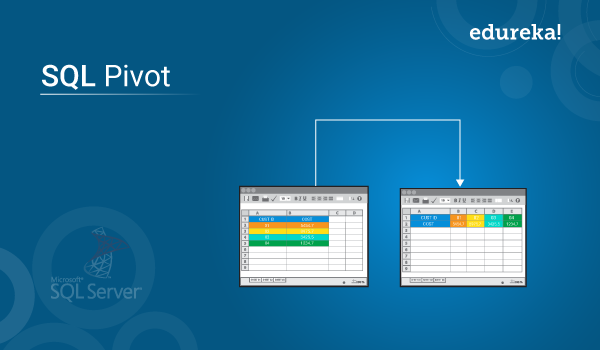



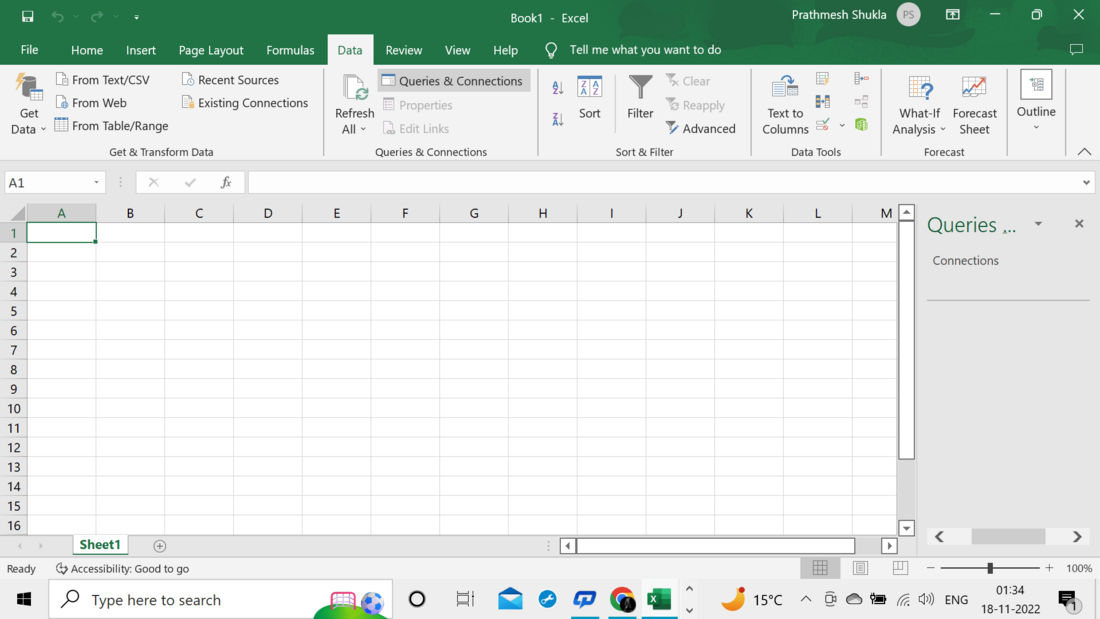
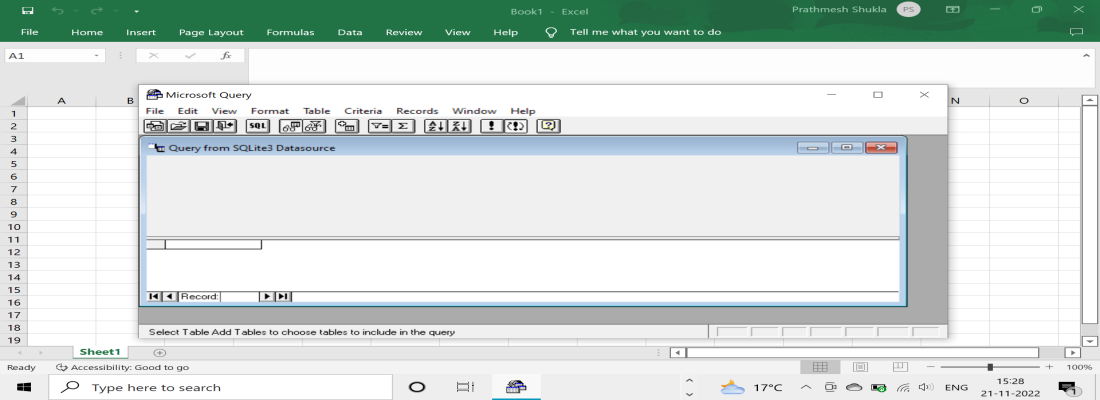






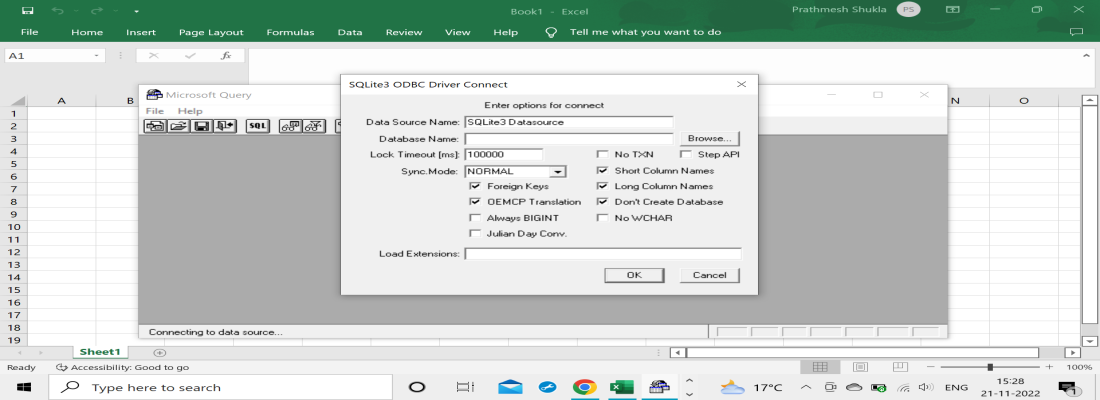


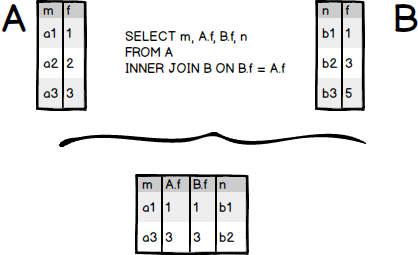



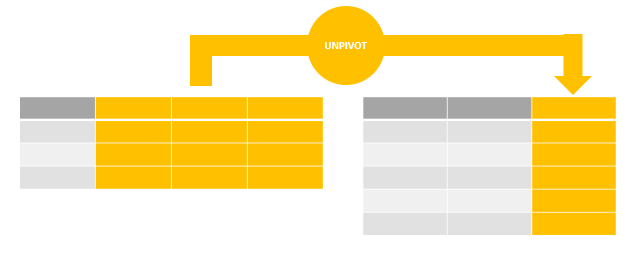

Article link: sqlite pivot columns to rows.
Learn more about the topic sqlite pivot columns to rows.
- How to pivot in SQLite or i.e. select in wide format a table …
- Building a Pivot Table in SQLite – Anton Zhiyanov
- How to pivot data in SQLite – DBA Stack Exchange
- Building a Pivot Table in SQLite – Anton Zhiyanov
- MySQL PIVOT Function: Pivot Rows to Columns Easily! – Devart
- Build Pivot Tables in MySQL Using User Variables – Arctype
- SQL Server PIVOT – javatpoint
- Pivot – Rows to Columns – Modern SQL
- How to build a pivot table in SQLite – GitHub
- display rows as columns – SQLite Forum
- Is UNPIVOT the Best Way for Converting Columns into Rows?
- Pivoting Data in SQL | Advanced SQL – Mode Analytics
- [Fixed]-Best way to do a pivot table in SQLite?
See more: https://nhanvietluanvan.com/luat-hoc/